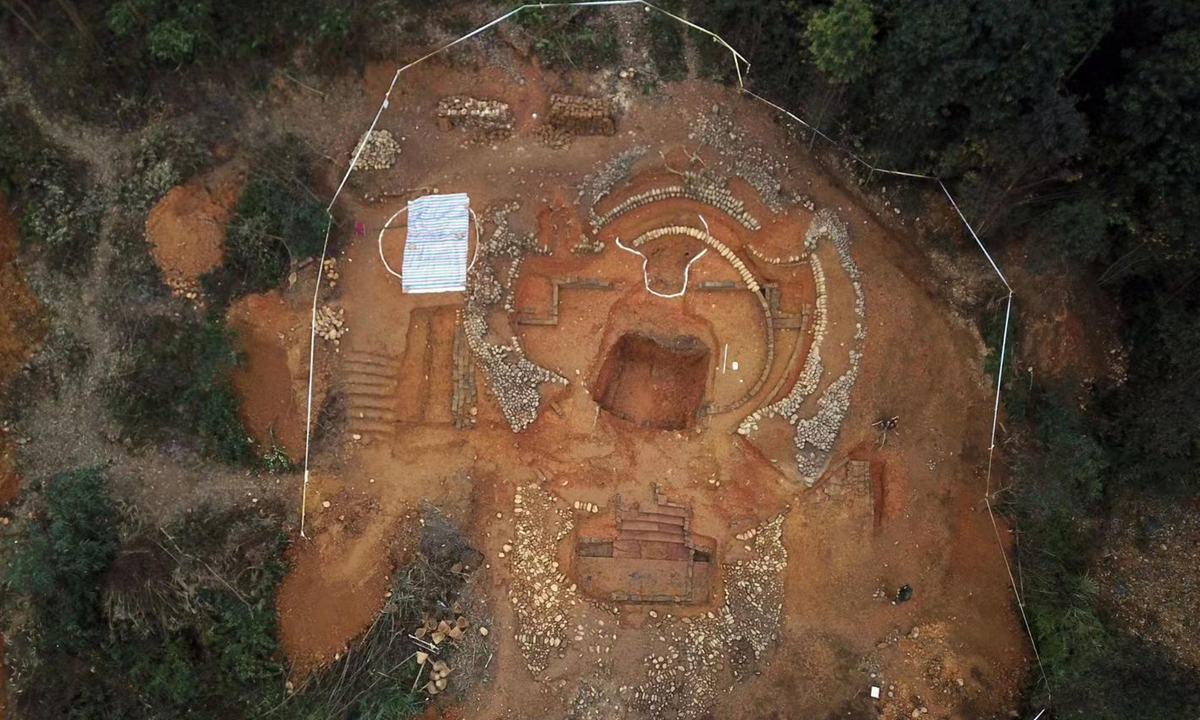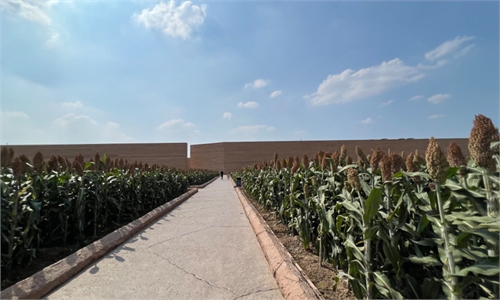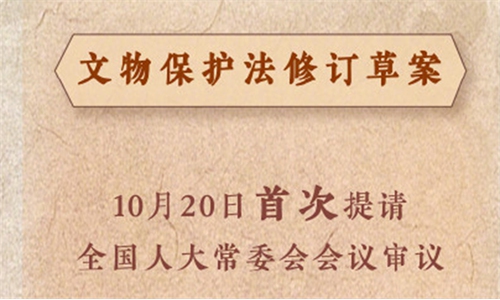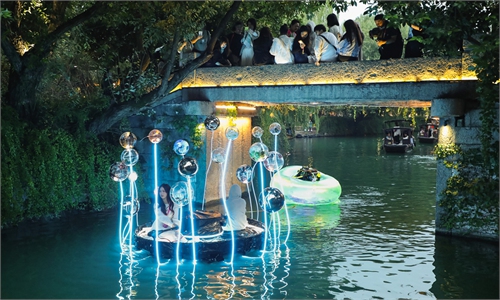ARTS / CULTURE & LEISURE
Cemetery of literati great Su Shi’s family members discovered in Sichuan

Site of the Su Dongpo family cemetry Photo: Courtesy of sckg.com
Encompassing the tomb of the great-grandson of Chinese literature giant Su Shi, an ancient tomb site in the city of Meishan, Southwest China's Sichuan Province, has been confirmed by archaeologists on Sunday as the "family cemetery" for Su, considered one of the greatest Chinese poets and who is more commonly known as "Su Dongpo."
Located at Shizika village in Meishan, the cemetery is being called "Su Fen Yuan" (The Su family cemetery).
Taking a bird's-eye view of the site, its core tomb area looks like the Arabic number "8." Of the two circles, the larger one was identified as belonging to Su Fu, the grandson of Su Shi. The smaller one was found to belong to Su Fu's son, Su Shi's great-grandson Su Shan.
Historian Fang Gang told the Global Times that Su Fu "was one of the most talented descendants of Su Shi." He achieved a high political position and once lived with his grandfather for a few years.
"When Su Fu grew old, he chose to return to the Su family's hometown, Meishan. It is interesting to see that burial cultural is essentially attached to the Chinese life philosophy of 'A floating leaf needs to return to its roots,'" Fang told the Global Times.
A tombstone inscribed with "the great-grandson of Su Dongpo" was unearthed from the Su Fen Yuan. It is seen as solid evidence of Su Shan's position in the family. The tomb of Su Shan was rectangular and the unearthed parts include walls, stairs and platforms. The most exciting bit was the discovery that the tomb's layout is symmetrical.
Archaeologist Jia Zhengyu told the Global Times that compared with the "widely scattered" nature of many ancient cemetery ruins, the site's "well-preserved structure and its clear configuration" are rare finds. "
"The discovery sheds light on the burial customs and funeral systems of the Song Dynasty (960-1279)," Jia told the Global Times.
Before the site's identity was confirmed, local villagers first suspected it was connected to the Su family in 2017, when a large number of tomb bricks were discovered one after another.
Ranging approximately around 40 centimeters in length and 20 centimeters in width, the bricks were unearthed by villagers. Ancient inscriptions such as "the tomb of Baihe Weng," and "The grandson of Dong Po" were uncovered under thick mud. In his late literati career, Su Fu titled himself as "Baihe Weng."
"More than 2,000 bricks have gradually been found and those only belong to Su Fu. We are still trying to find out more about Su Shan," said Wang Longhai, a staff member of the site's aluminum and silicon industrial park in Meishan.
Due to the abundance of relics, in 2018, a year after the tomb bricks were discovered, the Sichuan Provincial Cultural Relics and Archaeology Research Institute began a systematic excavation project at the site. Now, the Su Fen Yuan is protected with an all-around monitoring system and excavation continues since the site is sure to contain "more than what we have discovered so far," Jia told the Global Times.
According to an ancient document collected by the Dongpo Folk Museum called the Pedigree of the Meizhou Su Family, Shikazi village has once home to at least 24 people belonging to the renowned Su family. Aside the main figure Su Shi, his descendants such as Su Weidao and Su Fen all lived there as well.
Local Sichuan archaeologist Yu Pei'er told the Global Times that future investigation of the site and the local "Su family" culture is a significant "cultural anthropological project" that "contributes to our understanding of 'Su Trio' culture."
Su Shi, his father Su Xun and his brother Su Zhe, three great Chinese literati, are collectively known as the "Su Trio." They not only left behind an abundant amount of literature works, but also contributed to the formation of China's early ethical and social standards.
"The Su Fen Yuan archaeological project should be more engaged with the local Su Trio Temple. Such collaboration can not only better preserve the discovered relics, but also can inspire the public to learn about and inherent 'Su Trio' culture," museum expert Li Liyang told the Global Times.




